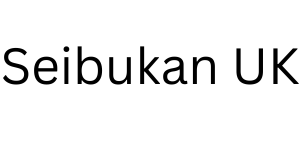Wai Shinzan (Wai Xinxian) (2) – Oral tradition that he was a well known martial artist in Fuzhou who was a military officer.
Ru Ru Ko and Wai Shinzan visited Okinawa as military attaches to the Sapposhi or Chinese Envoy representing the Emperor of China.
Wai Shinzan was said to be teacher to Seisho Aragaki.
Aragaki Seisho (1840-1918) – Okinawan master of Te, said to have taught Kanryo Higashionna the kata Sanchin and Seisan that was passed on to Miyagi Chojun.
Taught Niseishi and Unshu to Seiko Higa.
Aragaki Seisho would later give Kanryo Higashionna an introduction to Taitei Kojo.
Kojo Family Dojo – descended from the 36 chinese families that migrated to Kume Village, Okinawa in 1392. Opened a school at the Ryukukan – Okinawan trading settlement, Fouzhou City, Fukien province. Whilst the Kojo family had their own family style, various styles and kata may have been taught here including Sanchin, Sanseiru, Seisan and Suparenpai. Variations of the first three learnt by Kanbun Uechi 1877-1948, founder of Uechi Ryu.
Kanryo Higashionna (1853-1915) – Suggested he learnt Lohan (Monk fist) Boxing in Southern China. Fukien martial arts were influenced by White Crane Boxing in the mid 1800’s that resulted in a softening, this being expansive movement and breathing techniques.
Well known students include: Kyoda Juhatsu (To’on Ryu) , Chojun Miyagi (Goju Ryu), Kenwa Mabuni (Shito Ryu).
He taught Sanchin, Sanseiru, Seisan and Suparenpei. These typify Okinawan kata with their layout, movement and generation of force.
Juhatsu Kyoda a senior to Chojun Miyagi in the dojo of Kanryo Higaonna and founder of To’on Ryu. Taught Kanki Izumigawa for a number of years.
The influence can be seen in some of our kata and the whippy techniques when blocking and striking
Chojun Miyagi – Founder of Goju Ryu and the forms Gekisai, Sanchin San Po, Saifa, Seiunchin, Shisochin, Tensho, Sepai, Kururunfa.
As with other Okinawan teachers of the time came in possetion of the Bubishi, chinese manual of healing and martial arts. Written in the Fukien dialect it is a manual of mainly Chinese herbal medicine, Lohan (Monk Fist) and Behequn (White Crane boxing).
Seiko Higa – Initially studied with Aragaki Seisho and then Kanryo Higashionna and Juhatsu Kyoda. When Higashionna died Higa continued his study with Chojun Miyagi.
Kanki Izumigawa (1908 -1967) – initially studied with Juhatsu Kyoda and then Seiko Higa. First student of Higa to recieve the Bubishi. Head Master of the first Goju Ryu dojo, the Senbukan, in mainland Japan.
Members of the Senbukan dojo also studied Daito-Ryu, the Aiki concepts complimenting and so enhancing the Ju quality of blending with the opponents energy rather than confronting head on.
Sosui Ichikawa (1924 – 2005) – Head Master of the Sosuikan dojo in Ueno, Tokyo. Senior student of Izumigawa and recipient of Bubishi when attained 6th Dan from Izumigawa.
Was deeply inspired by this work and how kata is used in kumite. Created the form Gekifa the equivelent of a combination of Gekisai Dai Ichi and Ni
Kiyoshi Yonemoto – Recipient of Bubushi and Head Master of the Seibukan Honbu (headquarters) dojo, Tokyo.
Study of Shizantai, natural body and movement employed in both Kata and Kumite. Developed deeper insights into the how, why and when of Goju Ryu.
Mike Clark – Representative of Yonemoto Sensei, Chief Instructor of Seibukan UK.
(1) https://www.chandao.co.uk/blog-373232282336947/category/liu-long-gong
(2) https://medium.com/motobu-ryu-blog/the-lineage-of-waishinzan-f032f0201b








